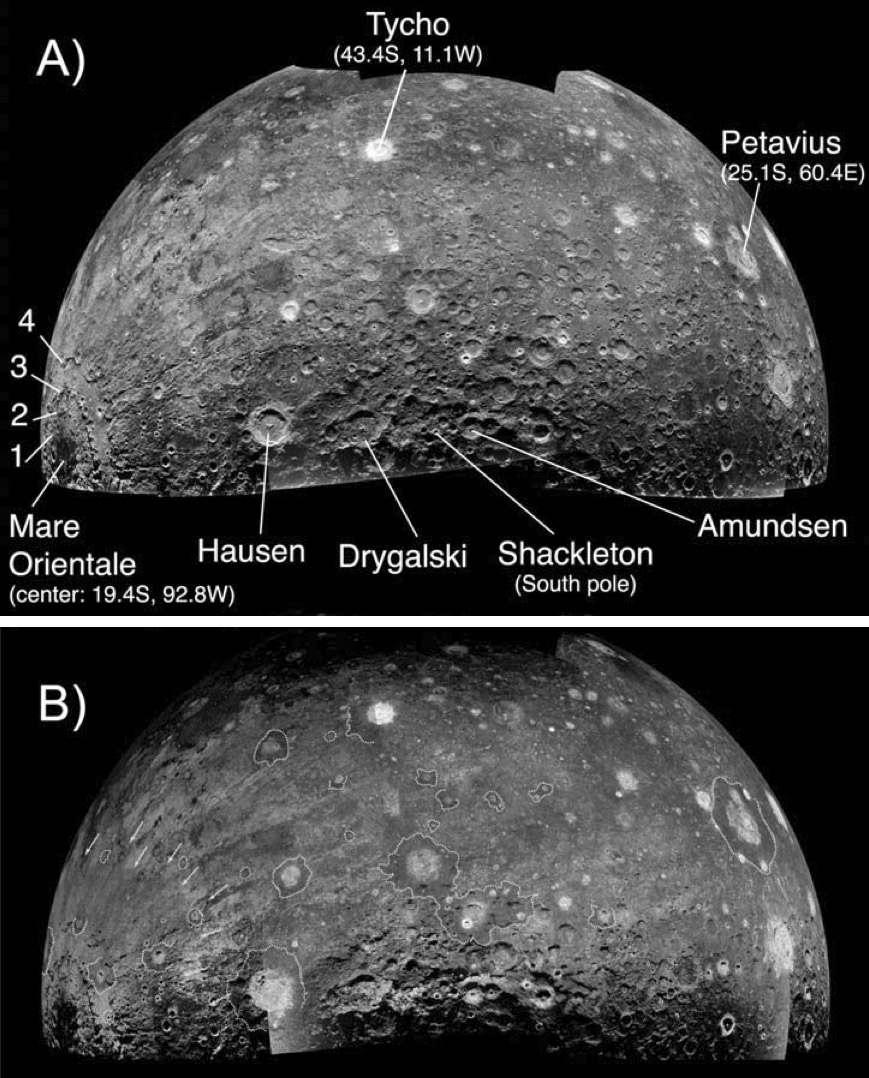April 30, 2008
Was I Wrong?

70 cm radar images from Geology article by Ghent, Campbell, Hawke and Campbell
For decades I have worried about the smooth and flat floors of craters in the southern highlands. The standard view has been that the fill material is some sort of fluidized ejecta from the formation of Orientale. I have often commented on areas adjacent to smooth floors that lacked the fill, and 20 years ago my German friend Gerhard Neukum pointed out that not all the smooth floors have the same age, based on crater counting. Now, in an important article Rebecca Ghent and colleagues use Earth-based radar to map the ejecta blanket from Orientale. They discovered that like many large craters, Orientale is surrounded by a radar dark halo, which means that the ejecta closest to the basin and extending out 600 km beyond the Cordillera rim, has a relatively small number of rocks with diameters larger than about 10 cm. This lack of fist-sized ejecta seems very strange since most young crater rims and immediate surroundings are radar bright, due to an abundance of boulders. The second discovery, and the cause for this LPOD's title, is that beyond the the dark halo, Orientale ejecta of a different type extend out to 2700 km from the basin center. This material is somewhat brighter than the background in the radar images, but not nearly as bright as the young craters such as Tycho. Ghent and her coauthors deduce that this material contains significant amounts of 10 cm scale rocks that are fragmented pieces of an impact melt-rich component of ejecta. What is remarkable is that the impact melt areas are correlated with the smooth-floored craters. This makes sense for if the impact melt was still hot when it hit the rim of a crater it would flow down slope and pond on the floor. The fact that the bright areas are patchy could account for adjacent low areas not having smooth coverings. Its harder to explain the difference in crater count ages for different floors, but for now the evidence is pretty strong in favor of impact melt-rich ejecta forming the smooth floors.
Chuck Wood
Technical Details
Image A is a radar image that is sensitive to topography, while B contains information about block size distributions in the top few meters of the lunar surface.
Related Link
R.R. Ghent, B.A. Campbell, B.R. Hawke & D.B. Campbell (May 2008) Earth-based radar data reveal extended deposits of the Moon's Orientale basin. Geology 36, #5, 343-346.
Yesterday's LPOD: A New Discovery?
Tomorrow's LPOD: Unburying a Rille
COMMENTS
COMMENTS?
Register, Log in, and join in the comments.



